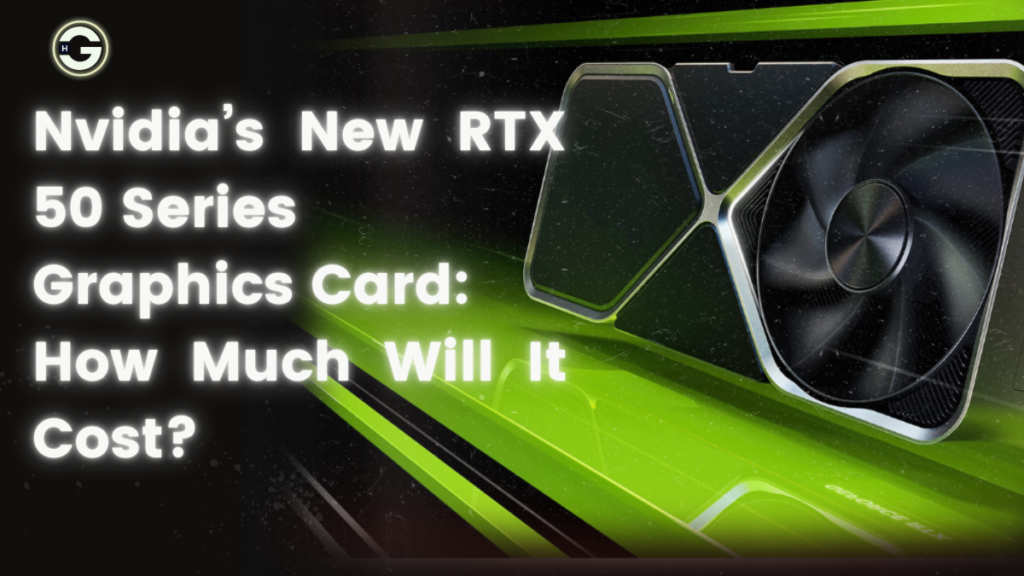NVIDIA’s RTX 50 series, rumored to be the next generation of GPUs, is poised to redefine performance standards in gaming, content creation, and AI workloads. With the RTX 5090 leading the charge, this series will also include several other models to cater to diverse user needs. This blog explores the anticipated specifications, cost analysis, and performance-to-cost ratio of the entire RTX 50 series.
RTX 50 Series Overview
1. RTX 5090
- Architecture: Blackwell
- CUDA Cores: 24,000 (estimated)
- Memory: 48 GB GDDR7
- Memory Bus: 512-bit
- Bandwidth: Over 2.0 TB/s
- Power Consumption: 600W TDP
- Target Audience: Professionals and enthusiasts demanding the ultimate performance.
2. RTX 5080
- Architecture: Blackwell
- CUDA Cores: 18,000 (estimated)
- Memory: 32 GB GDDR7
- Memory Bus: 384-bit
- Bandwidth: ~1.5 TB/s
- Power Consumption: 450W TDP
- Target Audience: High-performance gamers and creators.
3. RTX 5070 Ti
- Architecture: Blackwell
- CUDA Cores: 14,000 (estimated)
- Memory: 24 GB GDDR7
- Memory Bus: 320-bit
- Bandwidth: ~1.2 TB/s
- Power Consumption: 350W TDP
- Target Audience: Advanced gaming setups and mid-tier professionals.
4. RTX 5070
- Architecture: Blackwell
- CUDA Cores: 12,000 (estimated)
- Memory: 16 GB GDDR7
- Memory Bus: 256-bit
- Bandwidth: ~1.0 TB/s
- Power Consumption: 300W TDP
- Target Audience: Gamers and creators looking for high-value performance.
5. RTX 5060 Ti
- Architecture: Blackwell
- CUDA Cores: 10,000 (estimated)
- Memory: 12 GB GDDR7
- Memory Bus: 192-bit
- Bandwidth: ~750 GB/s
- Power Consumption: 250W TDP
- Target Audience: Budget-conscious gamers and creators.
6. RTX 5060
- Architecture: Blackwell
- CUDA Cores: 8,000 (estimated)
- Memory: 10 GB GDDR7
- Memory Bus: 160-bit
- Bandwidth: ~600 GB/s
- Power Consumption: 200W TDP
- Target Audience: Entry-level users and casual gamers.
RTX 50 Series Specifications at a Glance
| Card Model | CUDA Cores | Memory | Memory Bus | Bandwidth | Power Consumption | Target Audience |
|---|---|---|---|---|---|---|
| RTX 5090 | 24,000 | 48 GB | 512-bit | 2.0+ TB/s | 600W | Professionals and enthusiasts |
| RTX 5080 | 18,000 | 32 GB | 384-bit | ~1.5 TB/s | 450W | High-performance gamers/creators |
| RTX 5070 Ti | 14,000 | 24 GB | 320-bit | ~1.2 TB/s | 350W | Advanced gaming setups |
| RTX 5070 | 12,000 | 16 GB | 256-bit | ~1.0 TB/s | 300W | High-value performance seekers |
| RTX 5060 Ti | 10,000 | 12 GB | 192-bit | ~750 GB/s | 250W | Budget-conscious gamers/creators |
| RTX 5060 | 8,000 | 10 GB | 160-bit | ~600 GB/s | 200W | Entry-level users/casual gamers |
Performance-to-Cost Ratio of RTX 50 Series
| Card Model | Estimated Price Range ($) | Performance (CUDA Cores/Price) |
| RTX 5090 | 2,000 – 2,500 | 9.6 – 12 CUDA cores per $ |
| RTX 5080 | 1,500 – 1,800 | 10 – 12 CUDA cores per $ |
| RTX 5070 Ti | 1,000 – 1,200 | 11.6 – 14 CUDA cores per $ |
| RTX 5070 | 800 – 1,000 | 12 – 15 CUDA cores per $ |
| RTX 5060 Ti | 500 – 700 | 14.2 – 20 CUDA cores per $ |
| RTX 5060 | 300 – 500 | 16 – 26.6 CUDA cores per $ |
Cost Analysis of the RTX 50 Series
Estimated Prices
- RTX 5090: $2,000 – $2,500
- RTX 5080: $1,500 – $1,800
- RTX 5070 Ti: $1,000 – $1,200
- RTX 5070: $800 – $1,000
- RTX 5060 Ti: $500 – $700
- RTX 5060: $300 – $500
Additional Costs for Upgrades
- High-Performance PSU: $200-$300 (for 5090 or 5080)
- Cooling Solutions: $150-$500
- Case Upgrades: $150-$300 (for larger cards)
Conclusion
The NVIDIA RTX 50 series is set to revolutionize the GPU market with cutting-edge performance across a spectrum of needs and budgets. Whether you’re a professional requiring top-tier computational power or a gamer seeking high-quality visuals, the RTX 50 series has something to offer. The performance-to-cost ratio highlights that even the entry-level RTX 5060 delivers exceptional value. Stay tuned for official announcements from NVIDIA for more details on availability and pricing.

